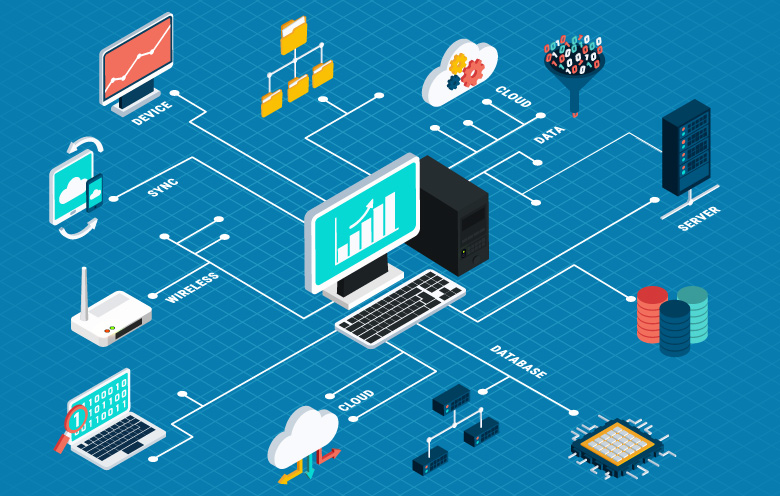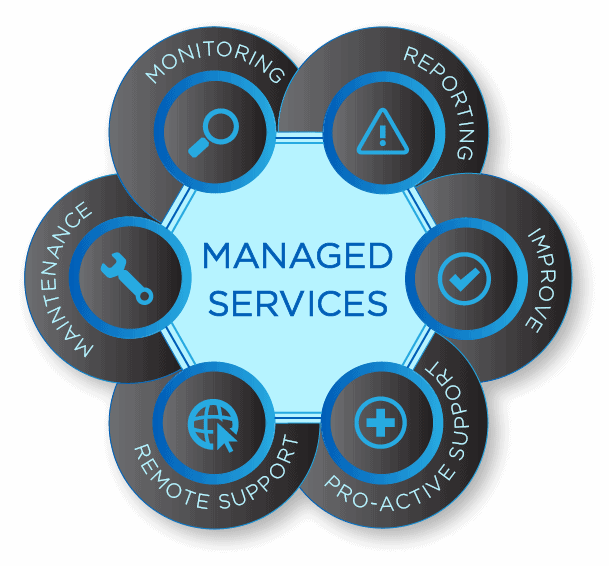Managed IT Services: Enhance Efficiency and Reduce Downtime
Why Every Service Must Think About Managed IT Solutions to Make Sure Continual System Surveillance and Upkeep
In today's swiftly advancing technical landscape, organizations face increasing stress to maintain robust IT frameworks. Managed IT. Handled IT services use a strategic technique to continual system monitoring and maintenance, making sure not just operational effectiveness however additionally enhanced safety versus prospective hazards. By contracting out these crucial features, companies can profit from expert oversight and proactive techniques that lessen downtime and maximize efficiency. However, the choice to take on handled IT solutions elevates important considerations concerning expense, scalability, and the choice of an appropriate supplier that can align with certain service requirements. What elements should be prioritized in this crucial choice?
Recognizing Managed IT Solutions
In today's technology-driven landscape, understanding handled IT services is important for companies seeking to maximize their IT facilities. Managed IT solutions refer to the technique of outsourcing certain IT works to a third-party service provider, called a Managed Solution Provider (MSP) This version enables organizations to focus on their core expertises while guaranteeing that their IT systems are preserved and monitored successfully.
Generally, handled IT services include a wide variety of offerings, consisting of network management, information back-up and recuperation, cybersecurity, and aid workdesk assistance. By partnering with an MSP, companies can take advantage of customized know-how and access to sophisticated modern technologies without the overhead prices linked with preserving an in-house IT department.

Advantages of Continual Monitoring
Continuous monitoring provides various advantages for organizations utilizing managed IT services, considerably enhancing their safety and security pose and operational effectiveness. By preserving real-time oversight of IT systems, services can quickly discover and reply to prospective dangers, lessening the danger of information violations and cyberattacks. This positive technique to safety not only safeguards sensitive information yet additionally aids to preserve compliance with industry regulations.
Moreover, continual tracking help in determining efficiency bottlenecks and system vulnerabilities, enabling for timely treatments that stop downtime and service disturbances. This guarantees that IT infrastructure stays reliable and with the ability of supporting service procedures perfectly. Managed Cybersecurity. As companies progressively depend on technology, the ability to check system efficiency in real-time ends up being vital for sustaining performance
Furthermore, constant monitoring makes it possible for organizations to enhance resource allocation by giving insights into use patterns and system health. This data-driven strategy permits informed decision-making regarding upgrades and financial investments in IT infrastructure. Inevitably, the advantages of constant surveillance prolong beyond instant safety and security improvements, positioning companies for long-lasting success by cultivating a durable and reliable operational setting.
Proactive Upkeep Methods
Routinely applying positive upkeep strategies is crucial for organizations making use of managed IT services to make certain optimal efficiency and minimize the threat of unexpected failings. These strategies include organized methods that concentrate on recognizing and dealing with prospective concerns before they intensify right into substantial troubles.
One key approach is regular system updates and patch monitoring, which help secure versus vulnerabilities that might be exploited by cyber dangers (Managed IT services). Making sure that software program and hardware components are updated not just boosts security however also enhances general system capability
Additionally, routine performance evaluations can recognize bottlenecks and ineffectiveness. By assessing system efficiency metrics, IT groups can make informed decisions about essential upgrades or source reallocations. Establishing a regular timetable for information back-ups is essential to guarding essential info and making sure service continuity.
Training staff in ideal techniques for innovation use is one more proactive step that minimizes human mistake, which is often a substantial consider system downtime. Eventually, embracing a proactive upkeep culture fosters a resilient IT setting that sustains business goals and boosts total efficiency. Via these methods, organizations can successfully reduce risks and ensure a durable IT facilities.
Cost-Effectiveness of Managed Solutions
Proactive upkeep strategies not just improve system integrity however also add to the overall cost-effectiveness of handled IT services. By implementing regular surveillance and maintenance, businesses can determine potential problems before they intensify, thus minimizing the likelihood of pricey downtime and emergency repair services. This preventative method makes it possible for companies to assign their economic resources a lot more efficiently, as they can prevent unanticipated expenses related to system failings.
Furthermore, handled IT solutions normally offer predictable rates models, enabling organizations to budget successfully. MSP. Unlike typical IT configurations, where costs can rise and fall substantially because of unforeseen issues, managed options provide a clear understanding of recurring costs. This transparency help in financial planning, ensuring that business can invest in various other crucial locations of their operations
Furthermore, outsourcing IT management to a specialized supplier can lead to significant cost savings in labor costs and training costs. Companies no more require to hire and preserve a complete in-house IT team, which lowers overhead. Eventually, the assimilation of handled IT services promotes an extra sustainable monetary version for businesses, enabling them to concentrate on development while ensuring their innovation framework remains find out this here robust and effective.

Selecting the Right Provider
When evaluating handled IT solutions, selecting the best copyright is essential for optimizing the advantages of your investment. A well-chosen supplier not just enhances your operational efficiency however additionally straightens with your business goals and needs. Begin by examining their experience and experience in your specific industry; companies with a deep understanding of your market will certainly be much better outfitted to resolve unique challenges.
Next, consider their variety of solutions. A thorough copyright needs to offer proactive surveillance, upkeep, and assistance, making certain all natural insurance coverage of your IT framework. Furthermore, scalability is crucial; as your service grows, your IT needs will evolve, and your service provider ought to be able to adjust as necessary.

Last but not least, openness in rates and solutions is crucial. A credible provider will clearly detail their offerings and expenses, enabling you to make enlightened choices without covert costs. By meticulously thinking about these factors, your organization can protect a managed IT solution company that fosters development and innovation.
Verdict
In final thought, the implementation of handled IT services arises as a tactical need for services intending to improve functional effectiveness. Continual system tracking and aggressive maintenance not just bolster safety but likewise minimize downtime, allowing companies to concentrate on their core activities. In addition, the cost-effectiveness and scalability of handled remedies present considerable benefits in today's dynamic technological landscape. Inevitably, selecting the proper handled IT service provider is critical for fostering a durable IT infrastructure capable of sustaining continual development.